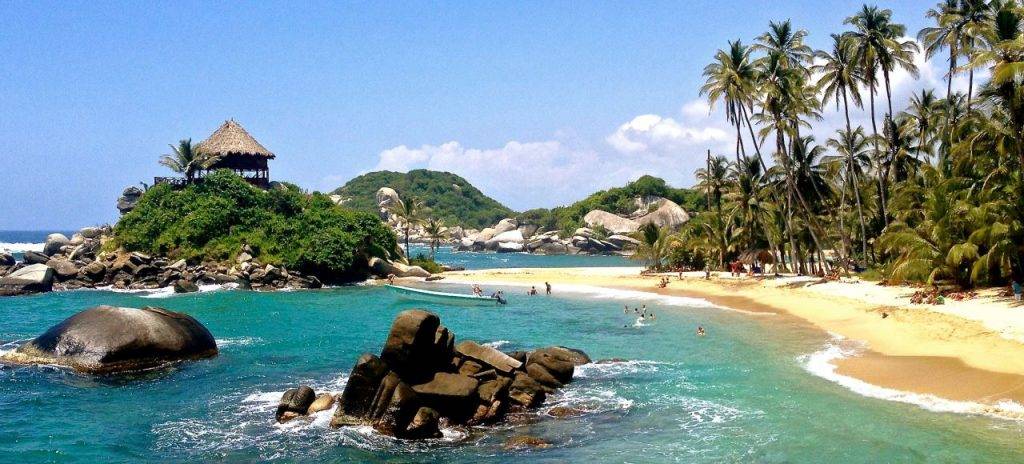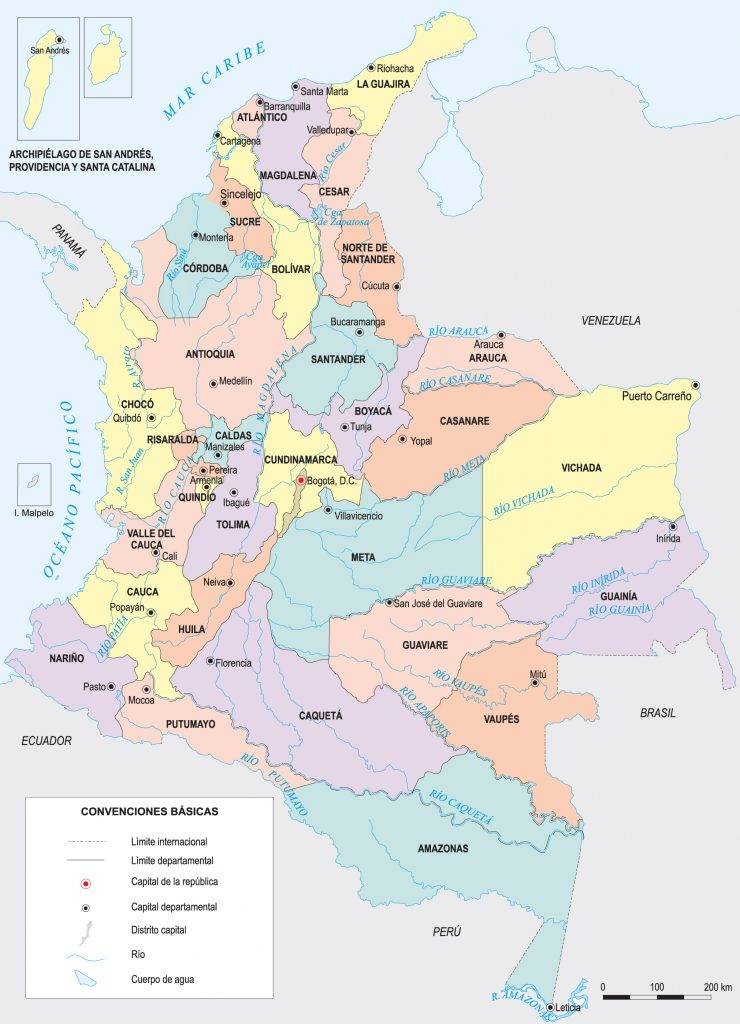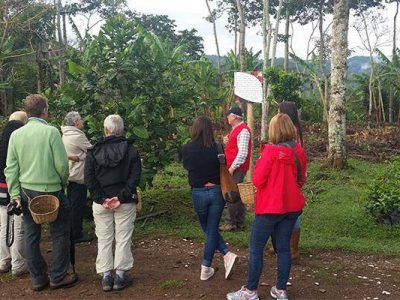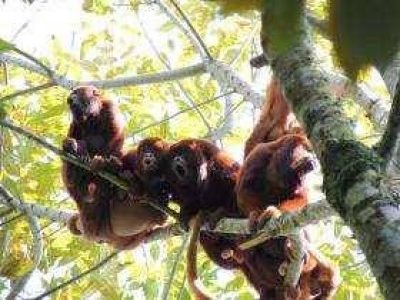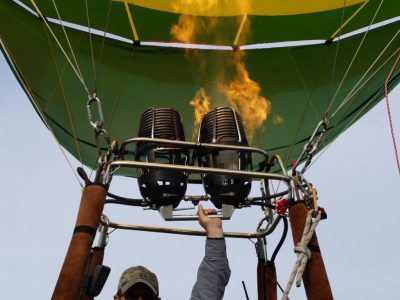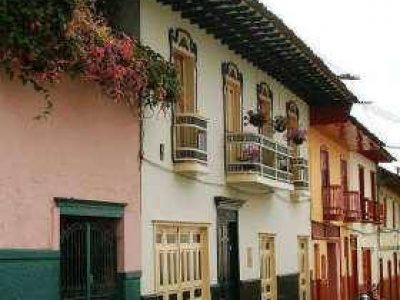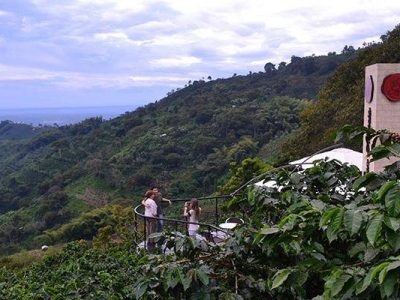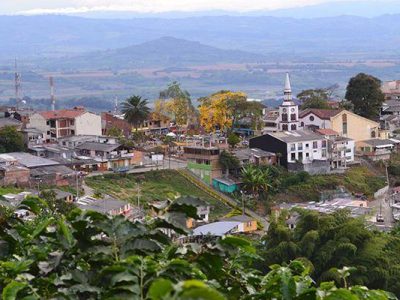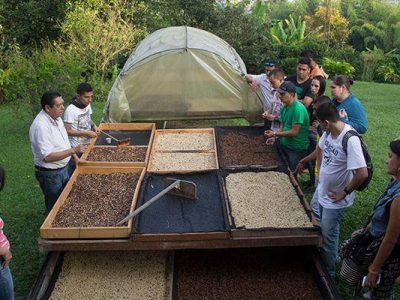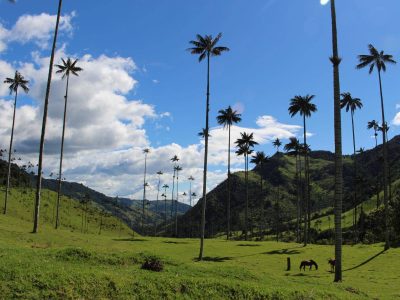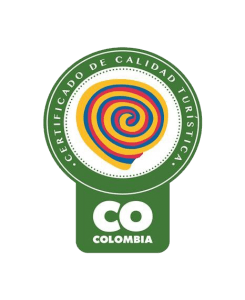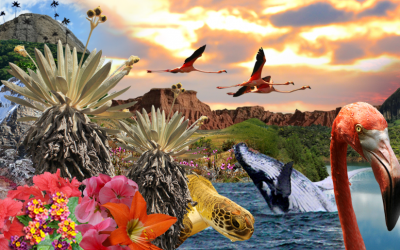
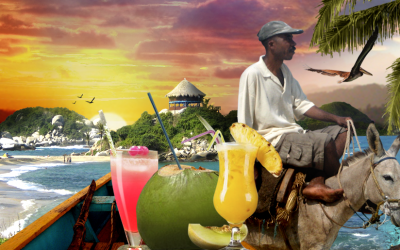
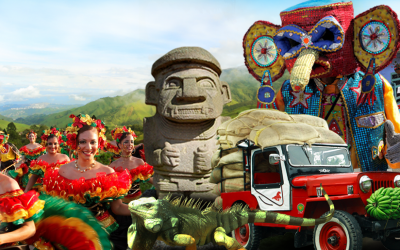
COLOMBIA - the land of Sabrosura
Colombia lies at the extreme north-western tip of the South American continent. The openness and zest for life that characterizes its inhabitants, the six totally different regions that the country unites in itself and the diverse flora and fauna make it a truly unique and very rewarding destination. Here, beaches combine with dense jungle, the rugged cliffs of steep mountains with rolling hills and beautiful colonial cities with vast plains. To describe Colombia – it is untouched Amazon, Caribbean flair, Latin rhythms and pre-Columbian cultural artifacts. Colombia is a country full of spectacular landscapes, cultural highlights, happiness and pure nature, which more and more travelers from all over the world discover for themselves. The country with 48 million inhabitants in the northern part of South America borders with Brazil, Peru, Venezuela, Panama, Ecuador and has a coastline of over 3,000 kilometers which touches the Pacific and the Atlantic Ocean. To the west, the country’s landscape is dominated by the Andes with the mountain ranges of the Cordillera. The plains of Eastern Colombia are crossed by forested wetlands and the vastness of the tropical rainforest. The region, criss-crossed by natural waterways is a paradise for plants. 55,000 different species are native here. After Brazil, Colombia is the most populated country in South America. As early as 4000 BC Indian civilizations on the present territory of Colombia traded goldsmith's art. In 1502, Christopher Columbus reached the mainland of Colombia, but left its development to his successors. Jiménez de Quesada founded Bogotá in 1538. In the first half of the 20th century, Colombia experienced a strong economic recovery through the production and export of coffee, the main export of the Colombian industry alongside bananas, cut flowers, emeralds and bamboo.
COLOMBIA - an unforgettable adventure!
REGION CARIBBEAN
The Colombian Caribbean coast extends from the Golfo de Urabá in the west (Capurganá and Sapzurro) to the desert of the Guajira Peninsula in the east. The snowy peaks of the Sierra Nevada de Santa Marta are striking. At the foot of the highest coastal mountain in the world lies Santa Marta. From here you can visit on day trips several abandoned settlements and remains of the Tayrona Indians. An experience of a special kind is a multi-day trek to Ciudad Perdida, the 'Lost Indian City'. It is terraced and is surrounded by a very special and mysterious atmosphere. In the idyllic National Park Tayrona there are many sandy white beaches, secluded coves and brilliant lagoons that are perfect for swimming and relaxation. If one follows the Caribbean coast in eastern direction, one comes to the village of Palomino with its beautiful beach, which is bordered by two mountain rivers that flow down from the Sierra Nevada and open here in the Atlantic. In fact, here you can lie on the beach, enjoy a swim in the waves of the Caribbean and then cool off with a dip in the freshwater river. Also a great adventure is a trip down the river on tubes. Further east, on the border with Venezuala, lies the Guajira Peninsula. This part of Colombia is known for its desert, which is still inhabited by the Wayúu, an indigenous tribe. Beautiful, secluded beaches await the visitor. There are also to be observed, significant colonies of red flamingos and other water birds. Particularly beautiful cities on the Caribbean coast are Barranquilla and Cartagena. The latter is also known as the Pearl of the Caribbean. She lures with typical Caribbean flair. With its completely walled old city center with fortress ring, the Caribbean beauty is a UNESCO World Heritage Site. Mounted in front, there are a number of small islands with beaches and crystal clear waters, that are ideal for snorkeling and relaxation (Rosario Islands). Along the coast there are still some natural mangrove forests that form a unique habitat for plants and animals. In addition, here you can still find numerous unspoilt fishing villages with unique charm. The volacano Totumo is located in the hinterland - the ideal place for a relaxing mud bath. Barranquilla is an extremely cheerful and fun-loving city. She is known for her excellent Arabic cuisine. In the evening salsa sounds breeze through the streets. A special highlight represents the Carnival in February – also named as World Heritage by UNESCO. Near Cartagena, in the interior, lies the colonial village of Santa Cruz de Mompox. At the time of colonization, this community was an important trading center. Located on the banks of the Magdalena River, it oozes history, architecture and romance. A rewarding destination away from the tourist crowds. Also not far from Cartagena, we have the village San Basilio de Palenque. It is considered the first free village of South America. It was founded by escaped African slaves. Many ancient customs and traditions have survived to this day. Further inland lies the city of Valledupar. Located on the riverside of Guatapurí, the surrounding area of the city offers plenty of pristine nature, which is ideal for walking. Valledupar is the home of Vallenato, a typical Colombian style of music from the Caribbean. Annually they hold the well-known Vallenato Festival and the whole city celebrates. Nabusimake is a traditional village of Arhuaca Indians in the Sierra Nevada de Santa Marta. It can be reached from Valledupar and is still inhabited by Indians. It is an ideal destination for those looking for natural and authentic adventure. About 700 kilometers off the coast lies the archipelago of San Andrés and Providencia. It rises in the turquoise waters of the Caribbean and the pearly white beaches of the islands sparkle in the sunshine. The crystal clear water provides an incredibly good view of the shimmering coral reefs and the underwater world glowing in all rainbow colors. The islands are ideal for swimming, relaxing and snorkeling.
[easy-mediagallery cat="51"]
REGION CENTRAL - ANDES
The Andes run through the territory of Colombia, directly behind the coastal areas from south to north. They are divided into three mountain ranges. The landscape is dominated by fertile valleys, rolling hills with lush, colorful flowering meadows, bright blue lakes, dark green forests and the white, snow-capped peaks that reach 5,300 meters. Bogotá is the capital and also for most visitors the gateway to Colombia. The city lies in a fertile plateau of the Andes and is home to about eight million inhabitants. Candelaria, the historical center of Bogotá, with its historic buildings and squares, gives us fascinating glimpses into the period of Spanish colonialism, but also the modern side of Colombia. Around the ‘Plaza Bolívar’ are grouped numerous churches and public buildings, such as the neo-classical cathedral, the Palace of Justice and the Archbishop's Palace or the Jesuit Church of San Ignacio. Besides the National Museum and the ‘Museo de Arte Colonial’, the ‘Museo del Oro’, which opened in 1938, is one of the finest museums in the city. With 38,000 exhibits, it houses the world's most important collection of pre-Columbian gold art. Many of the exhibits come from the so-called El Dorado lagoon of Guatavita, which is one hour away from Bogotá and can still be visited today. In addition, there are some old colonial villages in the region to be visited. Worth mentioning is Villa de Leyva, considered one of the most beautiful villages in all of South America. There is also a unique monument in the north of Bogotá with the Salt Cathedral of Zipaquira. It was excavated in a salt mine and is 120 meters under the ground! Nature lovers will find one and a half hours south of Bogotá, the town of Fusagasugá and a tropical warm climate. There is a beautiful farm to be visited, where the rich local flora with a variety of bromeliads and orchids can be seen, as well as a typical coffee plantation, where you can learn about coffee growing. The National Parks Chingaza, Chicaque and Sumapaz are a paradise for nature and hiking enthusiasts. Located near the capital, the parks offer day trips. The pristine forest landscapes, beautiful lagoons and barren Paramo can be explored in various walks. The National Park Sierra Nevada del Cocuy is suitable for light as well as for demanding excursions, also for professional climbing. Surrounded by the beautiful landscape of the Andes, there are hidden, very well preserved colonial villages. The village Barichara gets its charm from the stone-built houses and churches, narrow streets and small shops. From here, a hike to Guane, a small colonial village, can be done. The two villages are connected by the so-called Camino Real, a stone path built in the framework of the Spanish colonization and runs through the enchanting green landscape. Also located in the region of Santander, San Gil is a worthwhile trip. Adventurers will find everything their heart desires there. It offers extreme sports such as paragliding, water-rafting and abseiling from the waterfall.
[easy-mediagallery cat="52"]
REGION COFFEE TRIANGLE & ANTIOQUIA
The center of the world-famous Colombian coffee lies between the three major cities of Armenia, Manizales and Pereira, and is therefore also called coffee triangle. The fertile slopes of the Andes provide the ideal conditions for growing coffee and the best varieties in the world come from here. The ‘Zona Cafetera’ offers two extremely attractive National Parks with the well-known Parque Nacional Natural Los Nevados and lesser-known but no less attractive Parque Nacional Natural Tatamá. Montane rain forests, rivers, waterfalls, cloud forest, beautiful views of the ranges of the Andes and of course the so typical vegetation zone of Colombia, the Páramo, can be found here. But the ‘Zona Cafetera’ offers even more - in particular there are numerous coffee fincas for tourists, individual accommodation full of charm and plenty of excursions in the region. A good option also for travelers, who do not envisage multi-day treks in the national parks mentioned above. We highly recommend a visit to the nature reserve ‘Otún Quimbaya’, which is very close to Pereira and can also be easily combined with a visit to the National Park Los Nevados. Salento is considered one of the most beautiful villages in Colombia. Located near Armenia, the village has preserved the traditional architecture of the coffee zone. It serves as a starting point for hiking through the beautiful countryside. In particular, through the nearby valley ‘Valle de Cocora’, which is famous for its wax palms, a landmark of Colombia. From here, multi-day trips can be made to the National Park Los Nevados with its snowy peaks. Antioquia is essentially the region around Medellin and offers many destinations. Thus, for example, the colonial city of Santa Fe de Antioquia, the nature reserve ‘Río Claro’ invites for a swim. The nearby Hacienda Nápoles, once the country seat of the legendary drug lord Pablo Escobar, is no longer a place of horror. The rock ‘El Peñol’, with its stunning views over the lakes on the edge of the colonial village of Guatapé, is another unforgettable attraction of this region. Also, there are places that are less well known, but equally worth a visit. To be mentioned here is Jardín, a small village in the middle of the Andes, surrounded by coffee fields, waterfalls, rainforest and the fascinating ‘Esplendor Cave’. Medellín itself is often called the ‘city of eternal spring’, because the climate throughout the year there is very pleasant, not too hot, but never too cold. Medellín is Colombia's city of fashion; every year they host the most important fashion show in the country - the ‘Colombiamoda’. The most important cultural event each year is the ‘Feria de las Flores’ (flower festival), a huge city festival, which takes place in early October. Pablo Escobar once made millions in drug business, today he is even marketed himself in Medellin as a tourist attraction. Colombia's violent cocaine king died in 1993 in a hail of bullets. Once Medellín had the reputation of being the 'most dangerous city in the world', today it she a magnet for tourists. On the Plaza Botero, the sculptures of the artist Fernando Botero can be admired. Furthermore, there are many churches in Medellín, museums and monuments that are worth a visit. For example, the 'Catedral Metropolitana', the 'Iglesia de la Candelaria' or the 'Museo de Arte Moderno'. Also recommended is a visit to the 'Pueblito Paisa', a reconstruction of a typical village of the region. Situated on a hill, it offers a wonderful view of the city. The 'most innovative city in the world' is best viewed from the air. In a cable car of the 'Metrocable', that connects since a few years the poor neighborhoods on the slopes with the public transport system in the valley. The view wanders over tin roofs and busy streets of Santo Domingo district, where formerly rival drug gangs fought each other. A unique opportunity to observe the social reality of the city.
[easy-mediagallery cat="53"]
REGION SOUTHWEST & PACIFIC
[easy-mediagallery cat="54"]
The Pacific coast of Colombia is dominated by dense jungle, which is even more impenetrable than the tropical rainforest. Often the jungle reaches the sea, between hidden fantastic coves and beaches. The variety of plant, animal and bird species in this region is one of the highest in the world. Rare toxic frog species, tiger cats, caimans, turtles, dugongs (manatees) and humpback whales can be witnessed here with many other species. The 1,300 kilometers of coastline is original, unexplored, rough and rainy. The southern part of the coast is crossed by streams and rivers and covered by dense mangrove forests. The dominant landscape of the northern part is mountains, whose rugged slopes sometimes extend into the ocean. In the Natural Park Utría this lush, seemingly endless nature can be explored and marveled at. In the woods there also live some native tribes that, almost completely isolated from the outside world, pass on their traditions and customs from generation to generation. In front of the coast are the islands of Gorgona and Gorgonilla, which have been declared a nature reserve. Thus, the unique flora and fauna, the breathtakingly beautiful coral reefs and colorful marine life are strictly protected. This makes it a paradise for divers. A very special play happens every year from July to September, when huge humpback whales arrive from the South Pacific to breed and give birth to their young. Located further out in the Pacific is the Island Malpelo, which is also protected as a nature reserve and is very popular among divers because of the large volumes of different species of sharks. The hinterland is dominated by the western foothills of the Andes, which rise here up to more than 5,000 meters, higher than about the highest peak in Europe (Mont Blanc, 4,800 meters). Largest city in the region is Cali, one of South America's oldest cities. Today there are only a few remains of the colonial period. Gone are the days of the "Cali cartel", the city is modern, young and dynamic. Around the city you will still find many traditional sugar cane plantations and beautiful colonial cities such as Popayán, also called Ciudad Blanca – ‘the white city’ and the center of Guambiano Indians. On the way to the Ecuadorian border, there are some very beautiful lagoons in the Andes, especially around the city of Pasto, partially located in national parks, and a rich flora and fauna. Buga and the Church Sanctuary de las Lajas are two important Christian pilgrimage sites of national importance. Located more inland is the Tierradentro region with its so called archaeological park, a UNESCO World Heritage Site, where the remains of Tierradentro culture are. Further south, there is another important archaeological site in San Agustin, which is also a UNESCO World Heritage Site and is known for its stone sculptures and mythical figures.
REGION LLANOS ORIENTALES
Crossing from Bogotá the eastern Andes one reaches the plain of the Llanos Orientales. The Llanos Orientales, also known as the Orinoco area, are huge grasslands and tropical savannas, which extend far into Venezuela and are characterized by a unique bird life and huge fincas (cattle farms). Located further south is the Macarena National Park, which is home to a unique mixture of the flora and fauna of the Andes and the Llanos. There are still pristine forests, crystal clear rivers and nature to explore! There also can be found ‘Caño Cristales’, known as the most beautiful river in the world, or ‘river of five colors’. Between June and November its water algaes bloom and let the river shine in spectacular reddish colors. The Colombian Lllanos are bound in the east by the river ‘Río Orinoco’, whose forests are home to many endangered species. This very remote region is completely untouched and you can still find some traditional living indigenous communities there. The Colombian inlets of the Orinoco River spring in the Andes. The most important, strongest and longest among them is the river ‘Río Guaviare’. An expedition through the National Park Tuparro with highlights such as the ‘Raudal de Maypures’ and a visit to the ‘Cerros de Mavicure’ are an absolute must for adventurers and nature lovers. Probably the best animal life in Colombia can be experienced during a stay at an ecolodge in a huge nature reserve near Yopal. With some luck you can even admire here one of the legendary constrictors - an anaconda - one of the largest snakes in the world.
[easy-mediagallery cat="55"]
REGION AMAZON & ORINOCO
[easy-mediagallery cat="56"]
The Colombian part of Amazonia is still very unspoilt, untouched and sparsely populated, with the exception of a number of indigenous peoples. Leticia, a small town in the triangle of Colombia, Brazil and Peru, is the gateway to this fascinating region. In the vicinity, Ticuna and Yagua Indians still live in traditional jungle settlements, which are embedded in a stunning natural scenery. On a visit to their villages, can be seen how these people live at one with nature. Particularly impressive is a boat ride at night, when you can record the sounds of the rain forest and see the shining eyes of caimans in the water. On hikes through the rain forest, you learn a lot about the plants growing here and their healing properties. Among other things, you can see and admire the largest water lily in the world, the Victoria Regia. In quiet side arms of the Amazon river, you can catch for the famous piranhas. You can meet pink river dolphins, anteaters, snakes and crocodiles, manatees or even tapirs. In the branched canopy of the forest trees, macaws, toucans and thousands of other bird species, iridescent insects, butterflies, sloths and monkeys find a home. In the rainforest there are some reserves that are funded in part by ecotourism. Here you can live in the middle of the rainforest and discover the nature. One option is a reserve, a good three and a half hours drive from Leticia, already located on the Brazilian side of the Amazon Triangle, which offers a unique biodiversity and where you can discover the nature in many ways. Among other things, it is possible to do jungle hikes, canoe trips on the Río Yavarí with observation of pink dolphins, catching Pirañas, nocturnal excursions to observe the caimans, bird watching, baths in a natural pool, canopying and for the brave, the great experience of a night in the jungle. The Natural Park Amacayacu near Leticia represents another opportunity to plunge into the rainforest. The nature reserve is home to many species of parrots and monkeys, caimans, boas, pink dolphins, the Chapara (largest freshwater turtle in the world) and the ‘Victoria Regia’, which is considered the largest lotus plant in the world.
Other Tour Components:
3 DAYS
3 DAYS
3 DAYS
3 DAYS




